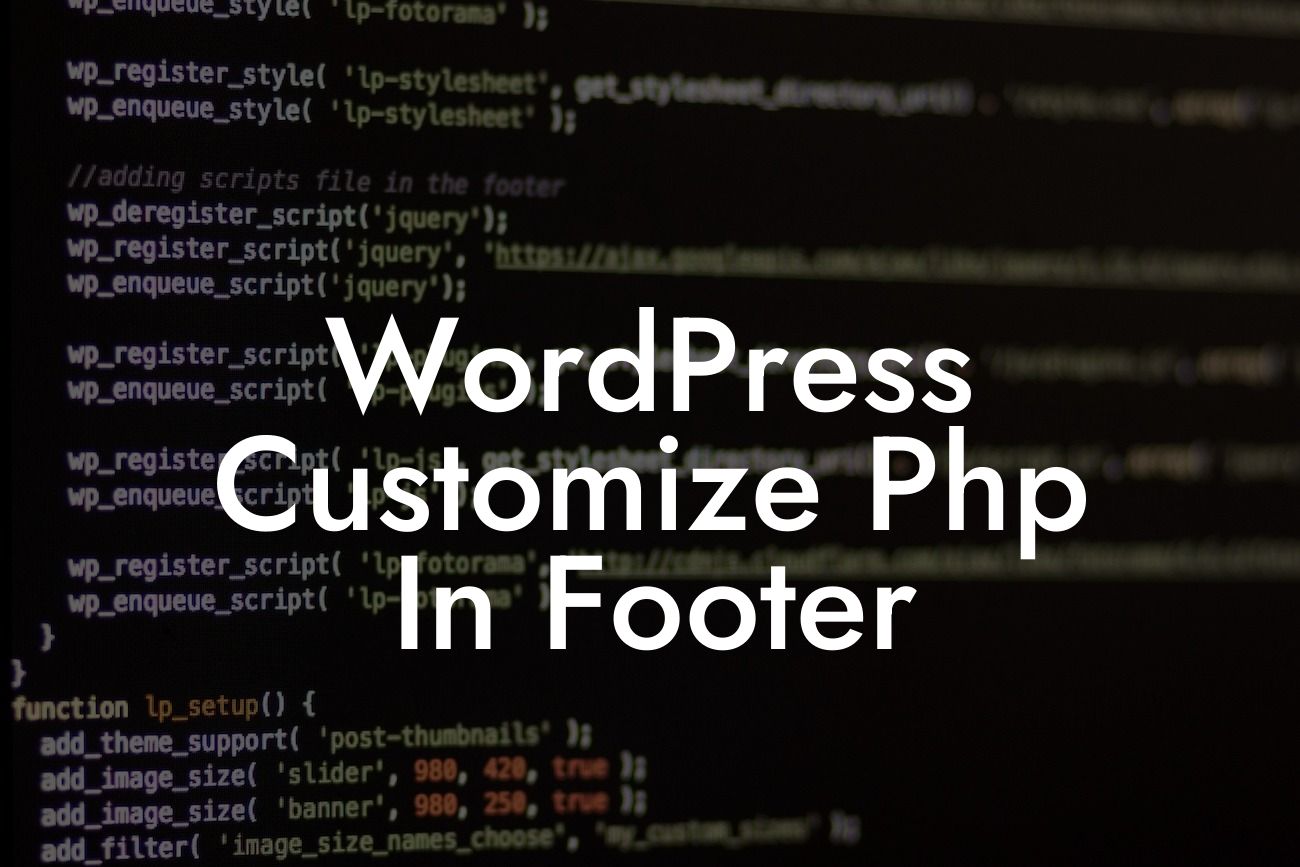WordPress is a powerful platform that allows small businesses and entrepreneurs to create and customize their websites with ease. One important aspect of customization is being able to modify the PHP code within the footer of your WordPress website. In this article, we will guide you through the process of customizing the PHP code in the footer of your WordPress site, empowering you to make the necessary changes to elevate your online presence and enhance the user experience.
First, let's understand why modifying the PHP code in the footer is essential. The footer section of your WordPress website is where you can include important information such as copyright notices, contact details, social media links, or even additional scripts. By customizing the PHP code in the footer, you have complete control over the content displayed, allowing you to tailor it to your specific needs.
To begin, access the WordPress dashboard and navigate to Appearance > Editor. Here, you will find the files associated with your theme. Search for the "footer.php" file and select it for editing. It's crucial to note that modifying the PHP code requires some coding knowledge, so proceed with caution. If you're not comfortable making changes directly, we recommend reaching out to a professional developer for assistance.
Once you are within the "footer.php" file, you can modify the code to add or remove content. You can use HTML tags, CSS styles, or even include additional PHP functions to enhance the functionality of your footer. For instance, you may want to display a dynamically updated copyright year using the PHP "date" function or embed social media icons that link to your profiles.
Remember to save your changes after making any modifications to ensure they take effect on your live website. It's crucial to test your modifications on different devices and browsers to ensure they display correctly. Additionally, it's recommended to create a backup of the original "footer.php" file so that you can revert to the original code if needed.
Looking For a Custom QuickBook Integration?
Wordpress Customize Php In Footer Example:
Let's say you own a small e-commerce store and want to display your accepted payment methods in the footer of your WordPress website. By customizing the PHP code, you can achieve this easily. Start by identifying the appropriate location within the footer code to include the payment methods. You can use an unordered list to display them neatly. Add the HTML and CSS styles required to create a visually appealing section within the footer.
Once you've added the necessary code, save your changes and refresh your website. You will now see the new payment methods section beautifully integrated into the footer of your WordPress site. This customization showcases your accepted payment options, instilling confidence in your customers and ultimately boosting conversions.
Congratulations! You've successfully learned how to customize the PHP code in the footer of your WordPress website. By taking control of this section, you can create a unique and tailored experience for your audience while effectively promoting your brand. Don't forget to explore other guides on DamnWoo to unlock even more WordPress customization tips. And, if you're looking for a comprehensive solution, be sure to try out our awesome WordPress plugins designed exclusively for small businesses and entrepreneurs. Share this article with others who may find it helpful and let's elevate our online presence together!













